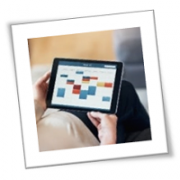Are you using Outlook in Microsoft 365 to its full potential? With so many powerful features, it’s easy to overlook tools that can make a big difference. This guide highlights Outlook’s key features that can boost your efficiency and keep your inbox organized.
Classic Outlook vs. new Outlook
Microsoft offers two versions of Outlook: classic Outlook and new Outlook. The former is the current version bundled with Microsoft 365, while the latter is intended to replace the built-in Windows Mail and Calendar apps.
Although the new Outlook is available for testing, it currently lacks some key business features. So for now, it’s best to stick with classic Outlook, which Microsoft will support until at least 2029
Key features to improve your Outlook experience in Microsoft 365
Take full advantage of the following Outlook features in Microsoft 365:
Customizing the ribbon toolbar
Outlook’s ribbon toolbar, which provides access to various features, comes in two styles: Simplified and Classic. The Simplified Ribbon, the default interface, offers a sleek design that highlights frequently used tools for a more streamlined experience. Meanwhile, the Classic Ribbon — familiar to long-time Outlook users — offers a complete view of all available options.
To switch between these views, click the downward-pointing caret (˅) in the bottom right corner of the Ribbon and select either Simplified Ribbon or Classic Ribbon. You can also customize the Ribbon by selecting File > Options > Customize Ribbon, where you can add or remove tabs and commands.
To hide the Ribbon for more screen space, press Ctrl + F1 or click the caret at the far right to toggle between different display modes.
Using the search bar beyond finding emails
Outlook’s search bar does more than just locate emails. It also helps you access Outlook functions quickly. This feature replaces the Tell Me function found in Outlook 2016 and 2019.
To use Outlook’s search bar, either click on the search box or press Alt + Q, then type a command such as “filter email” to filter messages by unread status, attachments, importance, and more. Compared to navigating through menus, using the search bar is a faster, more efficient way to access less common features. Plus, the search bar remembers your previous searches, making it easy to find your most-used tools.
Researching without leaving Outlook
Outlook allows you to perform web searches directly within the app, eliminating the need to switch between windows. Just highlight a word or phrase in any email, right-click, and select Search. Outlook will then use Bing to display definitions, Wikipedia entries, images, and other web results in a pane on the right. Take note that you need to enable Microsoft’s Intelligent Services to use this built-in search feature.
Enabling Focused Inbox
Struggling with email overload? Focused Inbox is here to help. Powered by artificial intelligence, this feature organizes your inbox by separating essential emails from less critical ones, letting you sift through the noise.
To turn on Focused Inbox, go to the View tab and click Show Focused Inbox. Outlook will create two tabs: Focused (for high-priority messages) and Other (for general emails). Train Focused Inbox by moving messages between tabs or setting rules for specific senders.
If Focused Inbox doesn’t suit your workflow, you can disable it anytime by selecting View > Show Focused Inbox.
Using the Archive folder for a cleaner inbox
Rather than deleting emails, try using the Archive feature to clear your inbox while keeping messages easily accessible. Archiving is perfect for emails you’ve already addressed but may need to reference later.
There are three ways to archive emails. After selecting the emails you want to archive, you can click Archive on the Home tab, press the Backspace key, or drag them into the Archive folder. You can retrieve archived emails anytime by browsing the Archive folder or using the Search function. If you’d like to move an email to another folder, just drag and drop it to your desired location.
Attaching files the smart way
Outlook simplifies file attachments by displaying your 12 most recently used files. Simply click the Attach icon and choose from the suggested list. You can choose to attach the file itself or include a link to it, which is especially useful for files stored in the cloud. If the file you want to attach isn’t in the recent list, you can browse your PC or web locations such as OneDrive and SharePoint.
With these Outlook features, you can organize your inbox, automate repetitive tasks, and improve your productivity. For more tips on getting the most out of Outlook, Microsoft 365, and other tech tools, turn to our IT experts.



